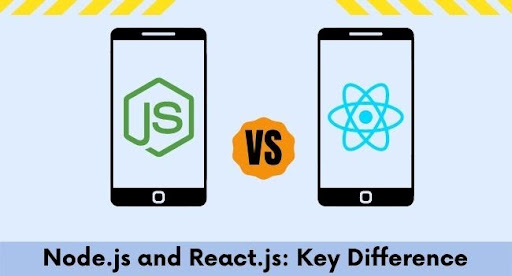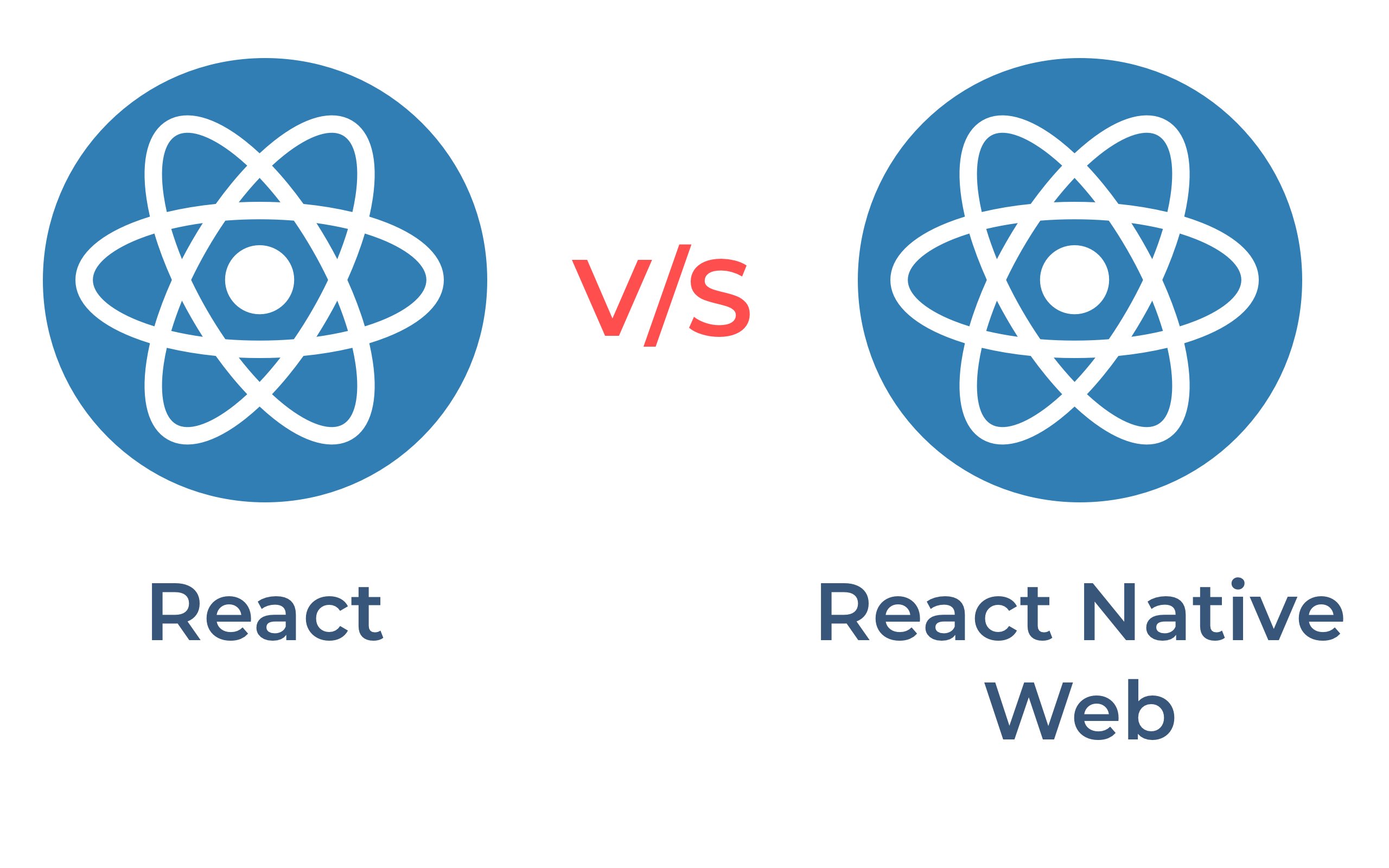JavaScript is one of the most popular languages out there, having several JavaScript frameworks and libraries to select from. Among the various options, Node.js and React.js are two of the widely-used libraries and developers often face trouble deciding which one to use.
However, differentiating node.js and react.js is similar to comparing tennis with badminton because they get operated on for achieving different goals.
Having said that, Node.js is a back-end framework developed for handling server-side operations.
Whereas React.js was developed to handle UI/UX (User Interface and User Experience).
And making use of Node.js with React.js for web development can assist you develop an idea to take web-based development up to the next step.
In this article, we will explore all the aspects of both node.js and react.js to differentiate them better, along with learning about each of them in detail.
What Is Node.js?
Node.js is an open-source and cross-platform runtime environment used for processing JavaScript code outside of a browser. It is majorly used for running JavaScript applications as well as network applications and utilizes JavaScript to engrave the fundamental modules. Its library is incredibly quick for code execution because it is built on Google Chrome’s V8 JavaScript engine.
In contrast to traditional servers, a Node.js server replies in a non-blocking manner, making it more scalable with fewer threads for handling requests. The best part is that the APIs in the Node.js library are asynchronous (i.e., non-blocking), preventing a node.js based server to wait for data from the API.
Benefits of Node.js
Quick Server Development
Node.js comes with APIs. As a result, it allows programmers to create a variety of servers, including DNS servers, TCP servers, HTTP servers, and much more.
No Lags
The data is returned in large sections by the applications. Providing developers with zero buffering and lags during the functioning of the applications.
Wide Community
Node.js has a very wide open-source community online. This is the main reason why Node.js applications have accumulated so many wonderful modules over time.
Smooth Input And Output Flow
Node.js APIs are non-blocking, which means that the server will not wait for information from an API to arrive. Rather, it will switch to a different API. Making the inputs and outputs flow more smoothly.
Scalability
Scaling apps in both horizontal and vertical dimensions is simple with Node.js. Even by adding new hubs to the current structure, the app or the project can be scaled.
What Is React.js?
React.js is an open-source front-end toolkit for creating structured user interfaces for websites and web-based applications. It allows us to create reusable UI components since it is declarative, fast, and adaptable. React components are difficult to reuse, and it’s utilised as the backbone for single-page, massive, and interactive online projects.
The goal of React.js is to make it easy to create dynamic and high-performing libraries. A React application’s components are responsible for rendering small and reusable pieces of HTML. React allows developers to make use of fundamental building blocks that can be used to create complex applications by nesting components within other components.
Benefits of React.js
Enhanced Efficiency
React.js allows individuals to keep their app functionalities in their own virtual DOM. This allows the modifications in the DOM to be updated automatically.
Web Optimization Friendly
React.js allows individuals to create lightweight web applications. Moreover, the virtual DOM can be given by running React on the server side.
Component-based Construction
You can easily create app sections based on your needs. It enables you to design components and incorporate them into your main content. React.js is a fast-updating framework that ships with a slick user experience.
Easy Maintenance
React is a smart library that reuses any critical system components and resolves any issues with the framework’s update.
Mobile app development
You can create a rich UI for native applications on both iOS and Android by using the same design conventions.
Node.js and React.js: Head-to-head Comparison Table
| Point of Difference | Node.Js | React.Js |
| Usage | It is used for performing server-side operations | It is utilized for developing client-side interfaces |
| MVC Framework Support | Supports Model View Controller Framework | Doesn’t support Model View Controller Framework |
| Execution process | It runs on Chrome’s v8 engine and uses an event-driven, non-blocking I/O architecture designed in C++. | It uses Node.js to compile and execute JavaScript code, and it’s simple to create UI Test cases. |
| Functionalities | Browser requests and authentication along with database calls are all handled by Node.js. | It uses the browser to make API requests and manage data. |
| Data Tracking | Real-time data streaming can be handled with much ease. | Because of React’s advanced architecture, older data are difficult to keep track of. |
| Libraries | It has one of the most comprehensive ecosystems of open source JavaScript libraries. | React.js open-source library is backed by Facebook (now Meta) itself. |
| Languages supported | Only utilizes JavaScript as their programming language. | Utilizes both JSX and JavaScript for programming. |
| DOM Usage | It doesn’t utilizes DOM (Document Object Model) | Makes the use of Virtual DOM (Document Object Model), making the processes execute in a much faster way |
| Learning Curve | Simple, quick, and easy to learn for beginners | Comes with a steep learning curve which may get complex for newbies |
| Scalability | Offers high scalability options to all the applications | Scalability gets complex in react.js |
| Architecture | The architecture is fairly simple. | React.Js has a complex architecture. |
| Microservices | Because of its lightweight nature, creating microservices gets easier in node.js | Comes with high complexity when creating microservices |
| Dynamicity | It is capable of efficiently handling single operations. | The dynamic nature of React.Js is its Unique Selling Point |
| Support | The program is developed in Java and can be simply translated into machine code. | Supports both Android and iOS. |
| Caching | Individual modules are cached for faster execution. | The focus is on reusability of code and the DOM. |
React.js and Node.js Work Better Together
React.js is a package that is solely used for rendering user interfaces in online and mobile projects. Nodejs, on the other hand, is a server-side runtime environment for exchanging data.
Whenever a user interacts with the user interface (React.js) and makes a server request, the browser replies appropriately by transferring data from the backend according to the defined URL route (Node.js).
Combining these two technologies can work wonders and save loads of time during development. The following are the top five reasons to combine Nodejs and Reactjs that makes the applications more efficient and scalable:
High server load: Node.js and React.js are extremely helpful when the online application requires managing multiple requests and managing server load balance.
Real-time data: If an application is based on Real-time Data-Intensive Management or Data Streaming, Nodejs is highly recommended with React.js as it maintains high server connections.
JSON APIs: Due to great code reusability and simple code interchange option in Reactjs, creating JSON APIs for the applications is incredibly efficient when using Nodejs.
Single Page Applications (SPA): Creating Single Page Applications with React and Node will eventually help in executing asynchronous data loading through callback functions.
Conclusion
Node.js is ideal to utilize for constructing a server-side web app, such as an online streaming platform. React.js is the solution to go if you want to develop a project with dynamic aspects like dynamic inputs, buttons, etc.
Both frameworks can be used for a single project. The backend can be built with the Node.js framework, while the front end can be built with React.js. Both the frameworks have a large and active user base and the choice between the two depends on the motive of the project.





